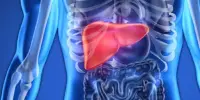In the US, a virus with the potential to paralyze youngsters in a manner similar to polio has reemerged. Enterovirus D68, often known as EV-D68, is what it is, and US health authorities are warning physicians to watch out for the infection this fall.
This week, the US Centers for Disease Control and Prevention (CDC) released a warning on a rise in the number of kids hospitalized with rhinovirus (RV) and/or enterovirus (EV) infections in the previous month.
There are many viruses in the RV and EV family, some of which can cause minor infections like the common cold. What’s most concerning is that some of the children tested positive for EV-D68.
The CDC stated that they had seen cases in “many locations” of the US but did not specify the number of youngsters who have an EV-D68 infection.
Children with EV-D68 who are hospitalized frequently experience coughing, shortness of breath, and wheezing. Acute flaccid myelitis (AFM), a dangerous spinal cord illness that results in limb weakness and slowed reflexes, is a polio-like condition that the virus can occasionally cause.
Only lately have researchers discovered that EV-D68 can lead to AFM. It became obvious when kids started becoming sick with a polio-like sickness but weren’t tested positive for the virus that causes it, another member of the enterovirus family.
Since the CDC started keeping track of the ailment in 2014, there have been 693 verified instances of AFM. The CDC reports that as of September 14, 2022, there have been 14 confirmed AFM cases.
Although the CDC claims there hasn’t been a rise in AFM reports, it has warned that “enhanced monitoring for AFM in the coming weeks will be important” because of the apparent increase in EV-D68 cases.
Children with asthma may be more likely than other children to have a serious illness since it is regarded as a respiratory infection. The average age of youngsters hospitalized with the virus during prior outbreaks was three years old.
Sadly, there aren’t any particular medications or vaccines for RV or EV, especially EV-D68, yet.
Considering prior years, it is believed that EV-D68 peaks in the late summer and early fall. There were increases in activity in the autumns of 2014, 2016, and 2018. A second increase was anticipated for 2020, however social isolation policies put in place during the COVID-19 epidemic slowed the virus’ spread.















